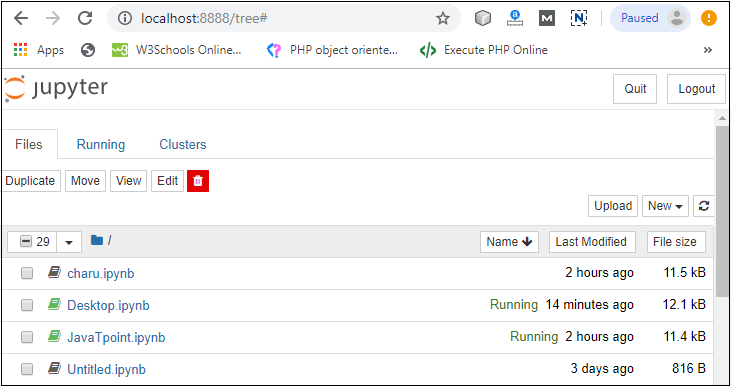
- #Use package in jupyter notebook online install#
- #Use package in jupyter notebook online full#
- #Use package in jupyter notebook online software#
- #Use package in jupyter notebook online download#
Once installed, you can use the Anaconda Navigator GUI application or the Anaconda Prompt command line console to operate the software.
#Use package in jupyter notebook online install#
Install Anaconda from your install location. Configure Anaconda for use in the disconnected enviroment: ¶
#Use package in jupyter notebook online download#
#Use package in jupyter notebook online full#
#Use package in jupyter notebook online software#
While in a connected environment, download the appropriate software you'll need: ¶ Copy the URL and paste it in your browser's address bar to use the notebooks.

As of v1.8.3 of the Python API, the minimum dependencies needed are: For this to work, you need to manually manage the dependencies in your environment based on the applications you need to solve and if you don't want to use every feature of the API. This allows developers to deploy the API with minimal footprint in space constrained environments. However, the API can function in a 'stripped down' state with only a few dependencies. Deep Learning with ArcGIS Geospatial Deep Learning with arcgis.learn How does feature categorization work? Object detection with arcgis.learn Object detection and tracking on videos How SSD works How RetinaNet works YOLOv3 Object Detector Faster R-CNN Object Detector How Mask RCNN works Multi-object Tracking using ObjectTracker Track objects using SiamMask How U-net Works How PSPNet works How DeepLabV3 works Edge Detection How Multi-task road extractor works How Change Detection Works How CycleGAN works How Pix2Pix translation works How SuperResolution works How Image Captioning works Point Cloud Segmentation using PointCNN Geo referencing and digitization of scanned maps with arcgis.learn Unsupervised Machine Learning using arcgis.learn Full圜onnectedNetwork and MLModel guide TimeseriesModel Text classification with arcgis.learn Named entity extraction workflow Labeling text using Doccano How SequenceToSequence works? Inference only Text Models Training Mobile-Ready models using TensorFlow Lite Monitor model training with TensorBoard Retraining Windows and Doors Extraction model Working with Multispectral Data Utilize multiple GPUs to train modelsīoth conda install -c esri arcgis and pip install arcgis will install all of the dependencies outlined in the system requirements section.


 0 kommentar(er)
0 kommentar(er)
